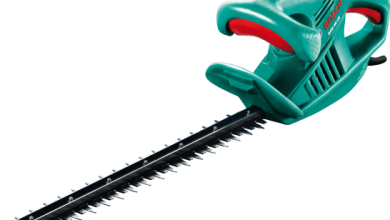How to grow onion in the garden. Essential Tips and Tricks
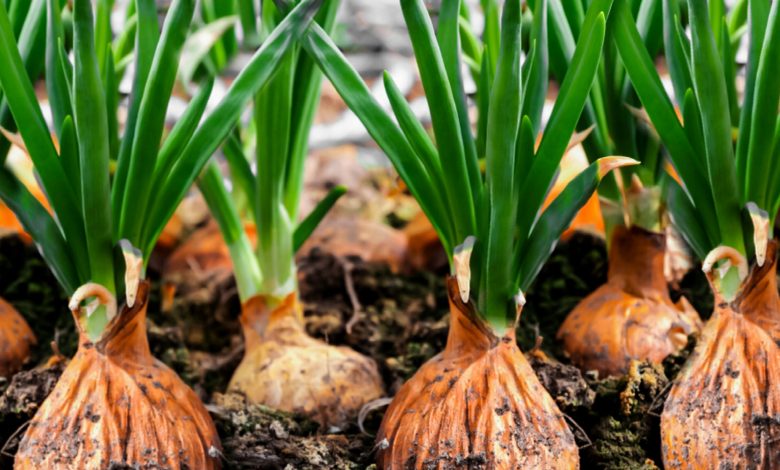
Today I will give you some tips on how to grow onions in the garden, from when and how to plant onions, to the care that the crop needs (how to fatten onions, how much to water, fight against pests and diseases, etc.).
If you are beginners in garden cultivation, do not worry, because the onion is one of the easy vegetables to grow and does not require too much care.
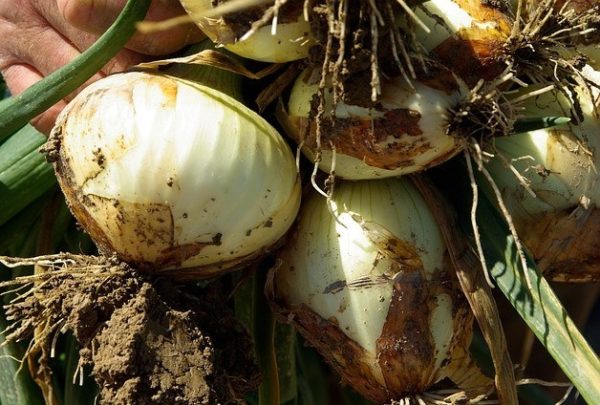
The onion (Allium cepa) is a «bulb» or «root» vegetable (like garlic, carrots or potatoes), and belongs to the Liliaceae family . We must take this classification into account to plan the best placement of the onions in the garden with respect to the rest of the plants (we will see it later, in the section on «Crop associations»).
When are onions planted and how long do they take to grow?
There are many varieties of onions of different sizes, colors and with long or shorter growing cycles, so if we choose the right varieties, we can have onions throughout the year.
Some types of onions are sown in spring and harvested in summer-autumn, although most are early varieties that can be grown through winter and harvested in spring.
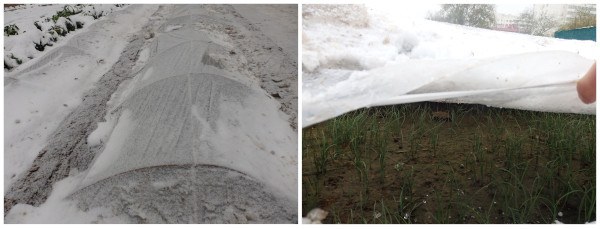
Most varieties of onions can be planted together with autumn-winter vegetables as they withstand low temperatures (slug, spring, radar or senshyu onion varieties are some examples).
If we want to take into account the influence of the moon on crops, you should know that the best moon to plant onions and other crops that grow underground is the new moon or the waning phase.
But… once the planting is done , how long does it take for an onion plant to grow? This is a medium cycle crop, so it will take 3 to 5 months from planting to have the onions ready to harvest, depending on the variety chosen.
How to sow and plant onion
To sow onions you can choose to do direct sowing or to make a seedbed and transplant later. As always, this second option requires a little more work, but the chances of success of the plants are much greater, especially if the weather is not right or if you do not have much experience.
To sow onion you must bury the seed to a depth of 1-2 cm.
The planting time for onions depends on the variety. Although, as we have seen, there are varieties that can be planted in spring or autumn, in general, the onion planting schedule begins in the cold season:
- The onion seedbed should be prepared in the fall or early winter.
- The transplantation of the seedlings to the definitive land or the direct sowing will be done from January to March (depending on the climate and the variety).
When planting onions (whether you have made your own seedbed and are going to transplant or if you have bought the seedlings already grown) take into account the distance between onions: at least 15 cm between plants and 20-25 cm between rows (some small onion varieties can be planted closer together and larger onions will need a little more space). Bury the small bulbs so that the tip is slightly protruding and slightly compress the substrate around it so that the plant is well anchored to the ground.
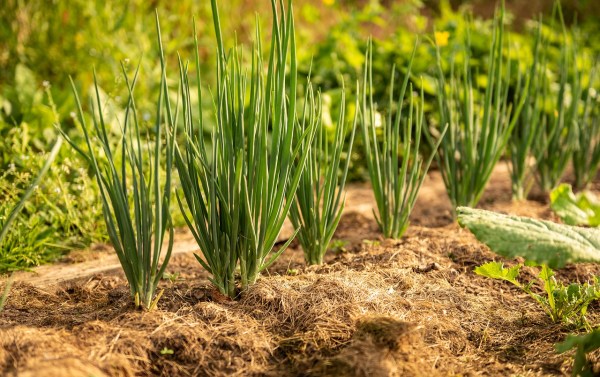
If you are growing onions in pots, planters or other containers, you will need a container that is 25cm deep and at least 15cm x 15cm space for each plant (smaller onion varieties can be planted a little closer together).). For example, in a square pot with a side of 15 cm or in a circular pot with a diameter of 15 cm, we can plant an onion, while in a planter with a length of 60 cm, three or four onions could be planted 10-15 cm apart..

What kind of soil do onions need?
As we have seen, the onion is a temperate climate crop that can withstand low temperatures. The plant needs a certain temperature variation in the soil, which must be cool during the first stage and somewhat higher during the formation of the bulb.
In the bulb formation period, it requires warmer temperatures (no frost) and several hours of direct sunlight, so onions should be planted in a sunny and clear place.

A good option to favor the maturation of the bulb and protect the soil from low temperatures is the installation of plastic covers or another type of mulching for orchards.
The onion prefers loamy-sandy soils, which drain well and are not caked, so if you are going to plant onions in pots, it is advisable to add a drainage layer with stones or expanded clay to the bottom of the container.
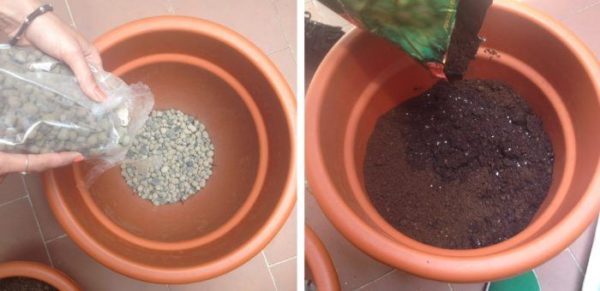
The onion plant is not very demanding in nutrients, so a background fertilization a few weeks before sowing or planting will suffice (it does not need top dressing during cultivation). If you have a terraced garden or a small piece of land and you are going to fertilize with manure, you should not plant onions when the soil is freshly fertilized (you have to let it mature for several months so that it decomposes well and the nutrients are mineralized and assimilable for the plant).
Another option to fertilize the soil is to add mature compost and mix it with the soil before sowing or planting onions. If onions are going to be planted in pots, it will be enough to mix a little compost, earthworm humus or one of the organic fertilizers for gardens with the substrate.
Rotations and associations of the onion with other crops
The intercropping technique has many advantages. One of its benefits, if the right crops are associated, is the prevention of pests and diseases. For this reason the onion is well associated with carrots: the carrot repels the onion fly, and the onion repels the carrot fly. In addition, together, they help keep whitefly away from the orchard.
Onions and garlic also go well with tomatoes and other nightshades such as eggplant or peppers. The combination of liliaceae with these fruit vegetables helps prevent diseases that can affect them and stimulates their growth.

Other crops that are well associated with onions are cucurbits (cucumber, courgette, melon…), strawberries or leafy vegetables such as cabbage, escarole, lettuce, spinach… since the type of use is different and the best use is space.
As we saw in the post about beneficial and harmful associations, onions and other lilies should not be planted together with legumes such as beans, broad beans or chickpeas, since these plants do not associate well.
How To Grow Onions: Onion Watering And Care
The onion plant is not very demanding in terms of water, so light watering will suffice.
It is preferable to install a drip irrigation system since, in addition to saving water, the appearance of fungi is prevented. If it doesn’t rain, an hour or an hour and a half a day of dripping will be more than enough.
How to fatten onions?
It is necessary to weed the soil from time to time to keep it more or less free of weeds and that they do not «choke» the onion plant.
Like garlic, onion plants should stop watering about 15 days before harvesting. In addition, to fatten the onions, «stemming» is very beneficial, since this technique favors the final development of the bulb. About 10 to 15 days before harvesting, when the stems begin to wilt, fold the leaves flat against the ground or tie them in knots.
The onions should be fully ripe when you pull them out of the ground, so wait until the leaves are completely yellow and dry and that’s the signal that you can harvest them. Gently pull them out of the ground and let them dry in a sunny spot for a couple of days.
Diseases and pests of onion
Typical onion pests are, for example, thrips, onion fly, beetles or leek moth larvae (miners that grow inside onion leaves). More information about this in the post « Onion Pests and Diseases «.
It is very common for onions to be affected by diseases caused by fungi, such as Mildew, Rust or Botrytis (Take a look at the post on Prevention and ecological treatments for fungi in the garden, to find out how to fight them).
In addition, if there are a large number of them in the soil, the onion can contract diseases caused by nematodes (this is not very common, but if it passes, try disinfecting the soil using the solarization technique).
References
- Zoppolo, R. et al., 2008. Food in the garden. Guide for responsible production and consumption. Edited by the National Institute for Agricultural Research of Uruguay (INIA) in collaboration with the Pan American Health Organization (PAHO).
- Miguel Gómez, A., 2017. Outdoor horticultural crops: Onion. Cajamar Publications Caja Rural. Agriculture Series, No. 25, p. 165-202.
- Enciso Garay, CR et al., 2019. Technical Guide: Onion Cultivation. Project for the Adoption of Technological Packages for crops produced by Small Rural Producers of Paraguay 2015-2019. Faculty of Agricultural Sciences (National University of Asunción).

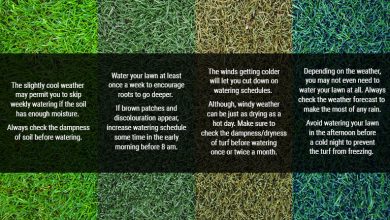
![Photo of Chinese Jasmine Cuttings: [Grafts, Time, Rooting and Planting]](https://www.complete-gardening.com/wp-content/uploads/2022/08/chinese-jasmine-cuttings-grafts-time-rooting-and-planting-390x220.jpg)
![Photo of Prune Lemon Trees: [Importance, Time, Considerations and Steps]](https://www.complete-gardening.com/wp-content/uploads/2022/08/prune-lemon-trees-importance-time-considerations-and-steps-390x220.jpg)
